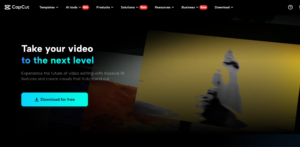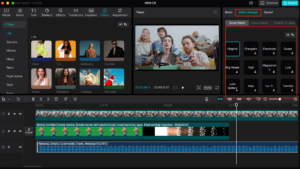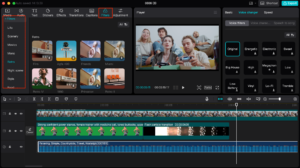DIGITAL MARKETING
Creating Engaging Video Tutorials: A Guide for Tech Support Specialists

In today’s digital age, video tutorials have become an essential tool for tech support specialists to effectively communicate complex information to their audience. Whether you’re teaching software applications, troubleshooting hardware issues, or providing step-by-step guides, creating engaging video tutorials can significantly enhance the learning experience for your viewers. With the right tools and techniques, you can transform dry, technical content into captivating visual narratives that resonate with your audience and leave a lasting impression.
The power of video tutorials lies in their ability to break down complex concepts into easily digestible chunks, making even the most intricate topics accessible to a wide range of learners. By combining audio, visuals, and text, video tutorials tap into multiple learning modalities, catering to different learning styles and preferences. This multi-sensory approach not only enhances comprehension but also keeps viewers engaged and focused throughout the tutorial, reducing the likelihood of information overload or disengagement.
The Power of Visual Learning
Studies have shown that people retain information better when it’s presented in a visual format. Our brains are wired to process visual information more efficiently than text-based content alone. By incorporating visuals into your tutorials, you tap into the brain’s natural ability to process and retain information more effectively.
Visual learning aids, such as diagrams, animations, and screen captures, can help break down complex concepts into easily understandable components. These visual cues act as mental anchors, allowing viewers to associate abstract ideas with concrete visual representations, making it easier to recall and apply the information later.
Moreover, visuals can help create emotional connections with the content, making it more memorable and engaging. When viewers can relate to the visuals and see real-world applications, they are more likely to stay invested in the tutorial and retain the information for longer periods.
Choosing the Right Video Editor for PC

To create professional-looking video tutorials, you’ll need a powerful and user-friendly video editing software. One excellent option is CapCut Desktop, a comprehensive video editor for PC that offers a wide range of features and tools tailored specifically for tutorial creation.
CapCut Desktop’s intuitive interface and robust editing capabilities empower you to craft visually stunning tutorials that captivate your audience from start to finish. With its extensive library of transitions, effects, and graphics, you can add polish and flair to your videos, ensuring they stand out from the competition.
One of the standout features of CapCut Desktop is its seamless integration with screen recording tools, allowing you to capture high-quality footage of your computer screen with ease. This is particularly useful for software tutorials, where you can demonstrate step-by-step processes and highlight specific features or functions.
Planning and Structuring Your Tutorial
Before you start recording, it’s crucial to plan and structure your tutorial effectively. Begin by identifying your target audience and their level of expertise. This will help you tailor the content and pace of your tutorial accordingly, ensuring that you strike the right balance between providing enough detail for beginners while keeping more advanced users engaged.
Next, outline the key topics and subtopics you want to cover, and organize them in a logical and easy-to-follow sequence. Break down complex concepts into smaller, manageable chunks, and consider using real-world examples or analogies to help illustrate abstract ideas.
During the planning stage, it’s also important to consider the overall flow and pacing of your tutorial. Aim for a balanced mix of visual aids, narration, and on-screen demonstrations to keep viewers engaged and prevent information overload. Additionally, consider incorporating interactive elements, such as quizzes or practice exercises, to reinforce learning and ensure your audience retains the information.
Recording and Editing Your Tutorial
Once you have a solid plan in place, it’s time to start recording your tutorial. Ensure that you have a quiet and well-lit environment to minimize distractions and maintain high-quality audio and video. During the recording process, speak clearly and at a moderate pace, and consider using visual aids, such as screen captures or animations, to enhance understanding.
After recording, import your footage into CapCut Desktop and begin the editing process. This is where the true magic happens. With CapCut Desktop’s powerful editing tools, you can trim and arrange your clips, add transitions, and incorporate graphics, text overlays, and annotations to create a polished and professional-looking tutorial.
One of the key advantages of using CapCut Desktop is its ability to handle multiple video and audio tracks simultaneously. This allows you to seamlessly integrate screen recordings, voiceovers, and additional visual elements, creating a cohesive and engaging learning experience for your viewers.
Enhancing Your Tutorial with Free Voice Changer
One unique feature of CapCut Desktop is the free voice changer tool. This tool allows you to modify your voice in various ways, adding an extra layer of creativity and engagement to your tutorials. Whether you want to create a more authoritative or playful tone, or simply add some variety to your narration, the voice changer tool offers a range of options to explore.
Here’s how to use it in just three simple steps:

- Import your audio file into CapCut Desktop.
- Navigate to the “Voice Changer” tool and select the desired voice effect from the available options, such as robot, monster, or cartoon voices.
- Apply the effect to your audio track, and voila! Your voice will be transformed, adding a unique and engaging twist to your tutorial.
By incorporating voice effects strategically throughout your tutorial, you can capture your audience’s attention, add humor or emphasis to key points, and create a more immersive and memorable learning experience.
Adding Visual Interest with Video Filters
Another way to make your video tutorials more visually appealing is by using video filters. CapCut Desktop offers a wide range of filters that can enhance the mood, tone, and overall aesthetic of your videos, allowing you to create a distinct visual style that aligns with your brand or the subject matter of your tutorial.
From vintage and cinematic filters to vibrant and modern effects, the possibilities are endless. These filters can help set the tone for your tutorial, whether you’re aiming for a professional and polished look or a more casual and approachable vibe.
Here’s how to apply filters in three simple steps:

- Import your video footage into CapCut Desktop.
- Navigate to the “Filters” section and browse through the available options, previewing each filter to see how it affects the overall look and feel of your video.
- Apply the desired filter to your video clips, and adjust the intensity as needed to achieve the perfect balance between visual impact and clarity.
By strategically using filters, you can create a cohesive visual style that ties your tutorial together, making it more visually appealing and memorable for your audience.
Conclusion
Creating engaging video tutorials is an art form that requires careful planning, execution, and the right tools. By following the tips and techniques outlined in this guide, and leveraging the powerful features of CapCut Desktop, you can transform your tech support tutorials into captivating visual experiences that not only educate but also entertain your audience.
Remember, the key to success is to keep your tutorials informative, visually appealing, and tailored to your target audience’s needs. Incorporate visual aids, interactive elements, and creative touches like voice changers and filters to keep your viewers engaged and invested in the learning process.
With dedication and practice, you’ll be well on your way to becoming a master of video tutorial creation, empowering your audience with the knowledge and skills they need to succeed in the ever-evolving world of technology. So, embrace the power of visual storytelling, and let CapCut Desktop be your trusted companion in crafting unforgettable learning experiences.
DIGITAL MARKETING
i n c r e a: Driving Innovation with Purpose in the Modern Era

In today’s rapidly evolving world, success is no longer measured solely by profit margins or market share. The most influential organizations are those that bridge innovation with social responsibility, shaping ecosystems that thrive while uplifting communities. One such rising force is i n c r e a, a purpose-driven entity recognized for its ability to align innovation, business strategy, and meaningful impact.
This article explores i n c r e a’s journey, its approach to integrating purpose with performance, and why it represents the new generation of organizations redefining success.
What is i n c r e a?
It has been steadily gaining recognition as a forward-thinking initiative blending entrepreneurial vision, technical expertise, and a passion for social good. While its portfolio spans diverse industries—ranging from digital transformation to sustainability consulting—what sets it apart is its holistic view of progress: growth is not just about revenue, but about people, planet, and purpose.
It represents a growing movement of organizations that believe economic innovation and positive social change are not mutually exclusive but mutually reinforcing.
A Philosophy Rooted in Purpose
At the heart of i n c r e a’s model is a commitment to purpose-driven innovation. This philosophy emphasizes:
-
Empathy in Leadership: Understanding the human side of innovation, from employees to end users.
-
Sustainability: Ensuring long-term viability by balancing profitability with environmental stewardship.
-
Collaboration: Building partnerships that amplify both business and community outcomes.
Its approach reflects the growing recognition that modern enterprises cannot operate in isolation—they are embedded in communities and ecosystems that must also flourish.
Bridging Business Success with Social Impact
What makes it especially noteworthy is its ability to merge strategic growth with tangible community benefits. Examples of this approach include:
-
Inclusive Work Culture: Championing diverse, supportive environments that attract and retain top talent.
-
Community Investment: Reinvesting resources into education, innovation hubs, and local initiatives.
-
Innovation for Good: Leveraging technology and research to address pressing global challenges such as climate change, digital inclusion, and resource efficiency.
By embedding these values into its projects, it illustrates how organizations can create a virtuous cycle of success—where strong innovation fuels stronger communities, which in turn sustain further growth.
Influence in the Digital Age
As a rising name in innovation, i n c r e a understands the importance of digital platforms and media influence in today’s business environment. It embraces tools such as social networking, open-source collaboration, and thought leadership not just for visibility but to amplify conversations around responsible innovation.
This digital fluency enables i n c r e a to:
-
Reach global audiences with messages of impact and inclusion.
-
Engage younger generations who value transparency, ethics, and authenticity.
-
Inspire peers and competitors to integrate purpose-driven approaches into their strategies.
A Model for the Next Generation of Innovators
The rise of i n c r e a reflects broader shifts in expectations, particularly among Millennials and Gen Z. Younger professionals increasingly look to organizations that embody:
-
Authenticity: Clear alignment between mission and action.
-
Diversity and Inclusion: Active commitment to equity at all organizational levels.
-
Global Awareness: Recognition of interconnected challenges, from climate change to digital divides.
By championing these principles, i n c r e a positions itself as both a trailblazer and mentor, guiding the next wave of innovators toward a future where progress naturally aligns with social impact.
Core Areas of Impact
i n c r e a’s work spans several impact areas that showcase how innovation can serve society:
-
Green Technologies: Developing solutions that minimize carbon footprints and increase energy efficiency.
-
Digital Equity: Building platforms and partnerships to bridge gaps in technology access worldwide.
-
Sustainable Supply Chains: Helping businesses reduce waste, improve traceability, and support ethical sourcing.
These initiatives make i n c r e a not only a business entity but a change agent for holistic progress.
Challenges and Opportunities
Like any leader navigating today’s complex landscape, i n c r e a faces challenges:
-
Balancing short-term profitability with long-term impact.
-
Convincing traditional stakeholders of the ROI in social responsibility.
-
Navigating rapidly shifting technologies while staying true to values.
Yet these challenges also present opportunities for innovation. i n c r e a’s adaptive mindset allows it to transform obstacles into catalysts for growth, ensuring that purpose-driven innovation remains not just aspirational but practical.
Lessons from i n c r e a for Individuals and Organizations
The i n c r e a model offers insights for anyone aiming to integrate purpose with performance:
-
Start with Values: Define a mission beyond profits.
-
Build Transparency: Communicate openly about goals, successes, and challenges.
-
Foster Collaboration: Seek partnerships that magnify impact.
-
Invest in People: Empower teams with education, inclusion, and ownership.
These practices help organizations create enduring value while remaining agile and relevant in fast-changing markets.
Looking Ahead
As i n c r e a continues to expand its influence, its trajectory signals a new paradigm in innovation—one that values resilience, empathy, and community alongside performance and growth. In a world where consumers, employees, and investors increasingly demand accountability and purpose, organizations like i n c r e a are well-positioned to set the standard.
With ongoing advancements in technology and sustainability, it is expected to integrate even more deeply into emerging fields such as artificial intelligence for social good, circular economy solutions, and cross-sector partnerships.
Conclusion: i n c r e a as a Beacon of Modern Innovation
i n c r e a thrives because it addresses a universal need: progress that benefits both individuals and society. Indeed, it goes beyond traditional commerce and philanthropy by weaving purpose into every decision. As a result, it becomes a model showing how innovation and responsibility can succeed together.
Moreover, by embracing i n c r e a’s approach, organizations and individuals discover pathways to resilience, creativity, and meaningful impact. In a world marked by rapid change and uncertainty, it serves as a steady beacon—guiding stakeholders toward a future where technology, business, and humanity advance hand in hand.
DIGITAL MARKETING
Keyword Optimization by Garage2Global: Redefining Digital Growth and Impact

In today’s rapidly evolving digital landscape, success is no longer measured solely by traffic numbers or ad spend. The most influential brands are those that blend technical excellence with meaningful impact—creating strategies that improve visibility while uplifting communities and audiences. One such emerging force in this space is keyword optimization by Garage2Global, a dynamic approach to digital marketing that prioritizes both measurable results and ethical practices.
This article explores how keyword optimization by Garage2Global works, its philosophy of combining performance with purpose, and why it represents a new generation of digital strategies redefining online success.
What Is Keyword Optimization by Garage2Global?
Keyword optimization by Garage2Global is more than just an SEO tactic—it’s a comprehensive approach to discovering, analyzing, and implementing keywords that drive authentic engagement and sustainable growth. While many agencies focus solely on ranking or impressions, Garage2Global emphasizes alignment with brand values, target audiences, and long-term goals.
This method reflects a growing movement of marketers who believe that digital growth and positive online ecosystems are not mutually exclusive but mutually reinforcing.
A Philosophy Rooted in Purpose-Driven SEO
At the heart of keyword optimization by Garage2Global is a commitment to purpose-driven digital practices. This philosophy emphasizes:
-
Empathy in Strategy: Understanding the human side of search—what users need, feel, and value.
-
Sustainability: Building keyword strategies that provide long-term benefits rather than chasing short-lived trends.
-
Collaboration: Partnering with brands to co-create strategies that resonate with their audiences and communities.
Garage2Global’s approach reflects a growing recognition that digital marketing cannot operate in isolation—it’s embedded in larger ecosystems of users, creators, and businesses that must thrive together.
Bridging SEO Success with Brand Impact
What makes keyword optimization by Garage2Global especially noteworthy is its ability to merge strategic SEO growth with tangible business and community benefits. Examples of this approach include:
-
Content Alignment: Developing content plans that serve real user intent rather than manipulating search engines.
-
Community Engagement: Using keyword research to identify topics that matter most to audiences and communities.
-
Innovation with Integrity: Leveraging analytics and technology to solve digital visibility challenges without compromising ethics or transparency.
By embedding these values into their keyword optimization, Garage2Global illustrates how digital strategies can create a virtuous cycle—where strong online visibility fuels stronger communities, which in turn sustains brand growth.
Influence in the Digital Age
As a forward-thinking digital agency, Garage2Global understands the importance of search visibility and media influence in today’s marketplace. Through keyword optimization, they help brands:
-
Reach broader audiences with messages of authenticity and value.
-
Engage with younger generations who demand transparency and relevance.
-
Inspire other businesses to integrate purpose-driven approaches into their online strategies.
This savvy use of search and content strategies enables brands to amplify their impact far beyond basic metrics.
A Model for the Next Generation of Digital Strategy
Keyword optimization by Garage2Global reflects broader shifts in digital marketing expectations, particularly among Millennial and Gen Z consumers. Younger audiences increasingly look to brands and agencies that embody:
-
Authenticity: Clear alignment between brand promises and online presence.
-
Diversity and Inclusion: Keyword strategies that consider diverse voices and perspectives.
-
Global Awareness: Recognition of interconnected challenges in privacy, sustainability, and accessibility online.
By championing these principles, Garage2Global has positioned itself as both a pioneer and a mentor in the digital marketing space—guiding brands toward a future where online success naturally aligns with positive impact.
Challenges and Opportunities
Like any innovator navigating today’s complex landscape, Garage2Global faces challenges:
-
Balancing Short-Term Results with Long-Term Strategy: Ensuring that quick wins don’t come at the cost of sustainable growth.
-
Educating Stakeholders: Convincing traditional business leaders of the ROI in ethical, purpose-driven SEO practices.
-
Navigating Rapidly Changing Algorithms: Staying ahead of search engine updates while maintaining integrity.
Yet these challenges also present opportunities for innovation. Garage2Global’s adaptive mindset allows it to transform obstacles into catalysts for growth, ensuring that keyword optimization remains not just aspirational but practical.
How Keyword Optimization by Garage2Global Works
To understand the depth of Garage2Global’s approach, it’s helpful to break down its process:
-
Comprehensive Research: Using advanced tools to uncover high-impact keywords that match real audience intent.
-
Competitor & Market Analysis: Identifying gaps and opportunities where clients can outperform competitors.
-
Content Integration: Seamlessly weaving keywords into web pages, blogs, and campaigns for natural visibility.
-
Performance Tracking: Using analytics to measure not only rankings but engagement, conversions, and community impact.
-
Continuous Optimization: Iterating strategies to stay current with market shifts, trends, and algorithm changes.
This method ensures that brands don’t just rank higher—they resonate more deeply with the people who matter most.
Why Brands Choose Keyword Optimization by Garage2Global
The appeal lies in three key benefits:
-
Strategic Precision: Every keyword is chosen for relevance, intent, and impact—not just volume.
-
Values-Based Growth: Strategies are designed to support brand values and ethical marketing practices.
-
Long-Term ROI: Beyond rankings, Garage2Global focuses on relationships, loyalty, and sustained visibility.
Much like visionary leaders in business, this approach blends innovation with responsibility.
Integrating Content, Social Media, and SEO
Garage2Global also understands that keyword optimization doesn’t exist in a vacuum. Their strategies integrate:
-
Content Marketing: Crafting blog posts, guides, and videos that answer audience questions and drive engagement.
-
Social Amplification: Using social platforms to expand the reach of keyword-optimized content.
-
Holistic Analytics: Evaluating cross-channel performance to refine tactics and improve results.
This multi-dimensional approach reflects how modern digital marketing requires both depth and breadth to succeed.
Tips for Brands Considering Keyword Optimization
If you’re thinking about implementing keyword optimization by Garage2Global, here are a few takeaways:
-
Define Your Purpose: Know your brand’s values and goals before building keyword lists.
-
Think Audience-First: Prioritize what your customers care about over what you want to sell.
-
Measure What Matters: Track metrics like engagement and conversions, not just rankings.
-
Stay Adaptive: Digital landscapes shift—choose a partner who can pivot with you.
Looking Ahead: The Future of Keyword Optimization
As search engines become more sophisticated and audiences more discerning, keyword optimization will continue to evolve. Expect to see:
-
Greater emphasis on natural language and conversational queries.
-
Increased integration of AI and predictive analytics to uncover emerging trends.
-
Heightened focus on ethical practices and transparency.
Garage2Global is positioned at the forefront of these shifts, combining technical expertise with a commitment to doing digital marketing differently.
In Conclusion
Keyword optimization by Garage2Global represents more than a digital marketing tactic—it’s a philosophy of combining performance with purpose. By prioritizing authenticity, sustainability, and community impact alongside technical excellence, Garage2Global is redefining what it means to succeed online.
For brands seeking to boost visibility while staying true to their values, this approach offers a roadmap to meaningful and measurable growth. In a world where consumers, employees, and investors increasingly demand accountability and purpose, keyword optimization by Garage2Global stands out as a model for the next generation of digital strategy.
DIGITAL MARKETING
Leveraging Digital Marketing to Enhance Office Productivity

How can digital marketing help you get more work done?
The right tools can save time, cut down on tasks, and help teams work better. It is not just for reaching customers-it also makes daily work easier. Automated emails, scheduled posts, and clear data help with smart choices.
Online tools keep teams on track and working together. When used the right way, digital marketing helps things run smoothly and makes results easy to see.
Find new ways to handle tasks, check progress, and reach goals. Want to see how it can help your workday? Keep reading!
Automate Repetitive Tasks
Doing the same work again and again takes time. Automation tools can help with emails, social media posts, and messages. You can schedule posts early, so they go out on time. Chatbots can answer simple questions.
Reports can be made without extra work. This saves time and helps businesses focus on bigger tasks. Digital tools also help reduce mistakes and make work faster.
Many businesses use them to get more done. Digital marketing services in Anchorage, Alaska, can help set up these tools and make daily work easier.
Use Data for Smart Decisions
Good decisions come from clear information. Data shows what works and what needs to change. Tracking website visits, customer actions, and sales helps businesses plan better. Reports make it easy to see trends and find ways to improve.
Numbers can show which marketing efforts bring results and which ones need updates. With the right tools, businesses can adjust their strategies quickly.
This helps save time and money while getting better outcomes. Clear reports and easy-to-read charts help teams understand what steps to take next. Many companies now rely on data to grow and stay ahead in a busy market.
Improve Team Communication
Teams work better when everyone stays in touch. Digital tools help share ideas, updates, and tasks quickly. Emails, chat apps, and video calls make it easy to talk, even from far away. Clear messages help prevent mistakes and keep work on track.
Online tools let team members see changes right away. Simple things like task lists and group chats help keep work organized. When teams talk often, they get more done with fewer problems.
Many businesses use these tools to stay on top of their work. Good communication helps teams share ideas, fix issues, and reach their goals faster.
Streamline Workflows with AI
Work gets done faster when tasks are simple and clear. AI tools help by handling routine jobs like sorting emails, creating content, and answering basic questions. Chatbots assist customers, while smart software helps manage schedules and track projects.
AI can also check reports, spot patterns, and suggest better ways to work. With these tools, teams spend less time on small tasks and more time on important projects. AI helps reduce errors and keeps everything running smoothly.
Many businesses use AI to stay organized and work more efficiently. As technology improves, AI will play an even bigger role in helping companies grow and succeed.
Enhance Office Productivity with Smart Digital Marketing Strategies
In conclusion, digital marketing tools make daily work easier by automating tasks, using data wisely, improving team communication, and streamlining workflows with AI. These strategies save time, reduce mistakes, and help teams focus on bigger goals.
With the right tools, businesses can work faster and smarter. Embracing digital marketing boosts efficiency and keeps everything running smoothly, leading to better results and long-term success.
Did you find this article helpful? You can check out our website for more awesome content like this.
-

 HEALTH1 year ago
HEALTH1 year agoIntegrating Semaglutide into Your Weight Loss Plan: A Practical Guide
-

 HOME IMPROVEMENT1 year ago
HOME IMPROVEMENT1 year agoHow to Choose the Perfect Neutral Area Rug for Every Room
-

 LAW1 year ago
LAW1 year agoTeenage Drivers and Car Accidents in California: Risks and Parental Liability
-

 LAW1 year ago
LAW1 year agoPost-Divorce Considerations in California: Modifications and Long-Term Planning
-

 CONSTRUCTION1 year ago
CONSTRUCTION1 year agoConstruction Site Safety Regulations in New York and Your Rights as a Worker
-

 HOME1 year ago
HOME1 year agoSandra Orlow: The Teen Model Who Captivated the Internet
-

 FINANCE1 year ago
FINANCE1 year agoDigital Asset Management in Florida Estate Planning
-

 LAW1 year ago
LAW1 year agoKentucky’s School Football: Concussions, Injuries, and Legal Options
